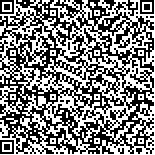下载中心
优秀审稿专家
优秀论文
相关链接
摘要

反照率通常定义为出射与入射的能量之比,是地表能量平衡中的关键因子。气候变化对反照率也很敏感。典型的气候变化预测是通过GCM与地表模型的结合进行的。目前在地表模型(如BATS模型)中,是通过空气动力学粗糙度Z0与降雪深度d两个参数来估计雪地上树冠的反照率的。在他们的工作基础上,重点考虑对于不同的太阳天顶角,直入一扇出反照率的方向性及其与叶面积指数(LAI)的关系。同时,为了保持BATS模型所需反照率模型的基本特征,主要在几何光学-辐射传输混合模型(GORT)的基础上做了一些近似来达到此目的。最后,以针叶林为例,用MODIS的反照率数据和BOREAS地面观测数据做了初步的模型验证。结果显示模型较符合实际情况。
A key component of the surface energy balance over land is the albedo, defined as the ratio of the integrated total of reflected solar radiation to the integral of the incoming solar radiation. Climate is sensitive to albedo variation and its changes by natural variations and human activities. Predictions of climate change typically use a GCM linked to a land surface model. Land surface models, e. g. Biosphere Atmosphere Transfer Scheme(BATS), estimate albedo of trees over snow roughly with the parameters of roughness length, Z 0, and snow depth, d . Based on their work, we further consider the difference in directional to hemisphere albedo for different solar zenith angle( SZA ), and leaf area index( LAI )dependence. In order to keep the basic feature of BATS model and add these two new features, we simplified geometric optical and radiative transfer(GORT)hybrid model to reach this purpose. In this paper, we take the conifer as an example. And we validate the model initially with observational data from MODIS and from BOREAS. Results show that: this model can simulate the observations well. This model can be rather simple to retrieve the albedo of remote sensing pixel. It can be a strong tool for understanding the climate system.

